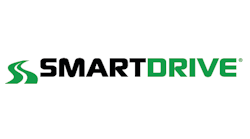L.A. Metro Selects SmartDrive for Rollout across Bus and Rail Fleets
SmartDrive Systems announced that Los Angeles County Metropolitan Transportation Authority (Metro) has selected SmartDrive for rollout across its entire fleet of 2,350 buses and 315 rail cars. Metro has awarded the company a new five-year contract for its bus lines while also expanding its deployment to include the light and heavy rail system. Metro is also upgrading its bus fleet with the latest SmartDrive solution and adding extended recording capability, which provides the agency immediate video offload, remote equipment monitoring and up to 100 hours of video available on-demand. Having sought a solution that leveraged a common hardware platform and safety program and could be tailored to the distinct technical and regulatory requirements of buses and rail independently, Metro chose SmartDrive’s video-based platform following an extensive request for proposals (RFP) process.
“With a service area of more than 1,400 square miles in a county of nearly 10 million people, L.A. Metro is committed to ensuring that safety is always our first consideration,” stated Al Martinez, director of information technology – transit application at Metro.
Metro’s bus fleet has relied on SmartDrive since 2009. When the agency initiated a proof of concept to assess the effectiveness of a video safety program for its light and heavy rail system following a collision between one of its buses and rail cars in 2013, it selected SmartDrive because it was the only provider to offer an open platform and flexibility to tailor the program to the specific hardware, technical and operational needs of a major metropolitan rail system. Following the extensive trial of the video safety solution, during which Metro noted improvements in rail safety, the agency issued a comprehensive RFP for its bus and rail lines. SmartRail World recognized Metro’s proof of concept with its SmartRail Innovation Award for Project of the Year in 2015.
“L.A. Metro is widely recognized as a leader in public transit safety and we applaud the organization’s broad-based vision to protect its passengers, employees and the general public by implementing SmartDrive across its bus and rail lines,” noted Steve Mitgang, CEO of SmartDrive. “With our video analytics platform, agencies can implement a common solution that enables them to meet the unique operating and regulatory needs of both bus and rail. This unified approach delivers a host of efficiency savings without requiring either area to compromise on requirements. We are proud to be working with L.A. Metro and supporting them on this important public safety and compliance initiative.”
SmartDrive Rail was initially released in 2015 and the issuance of a U.S. Patent number 9,296,401 B1 for its unique triggering capability was announced today. The platform leverages the video analytics platform used by Metro’s bus fleet, modified with additional hardware and cabling that comply with stringent rail regulatory requirements. The agency’s deployment, which is expected to grow from the initial 315 rail cars to more than 560 over the next five years, takes advantage of rail-specific triggering and observation scoring to ensure the video-safety program supports compliance with government regulations and standard operating procedures across Metro’s rail fleet, in addition to providing an accurate measurement of risk for rail.
Metro’s rail car installation also takes advantage of SmartDrive’s split camera design, which provides the flexibility to install the cab-facing camera to ensure the best of view of the operator and control panel, enabling management to understand actual rail car equipment operation and compliance with standard operating procedures. In addition to capturing collisions and near collisions, SmartDrive Rail captures high-risk operations including passing “red-over-red” and bar signals, “deadman,” automatic train protection (ATP) overspeed, ATP bypass active, improper stop at the station, and penalty stops. SmartDrive Rail also includes a random trigger for compliance audit purposes and up to eight days of continuous video recording.



